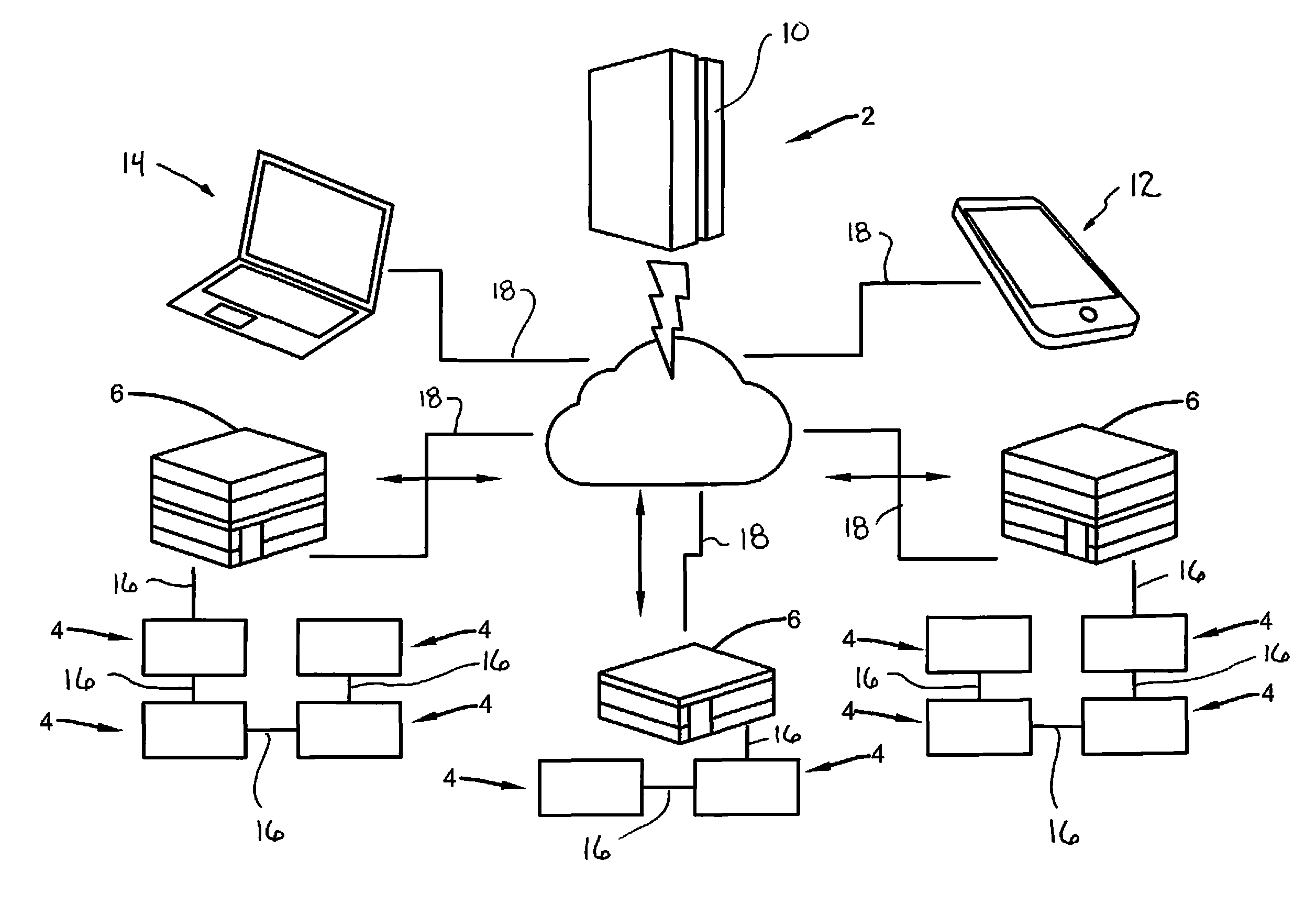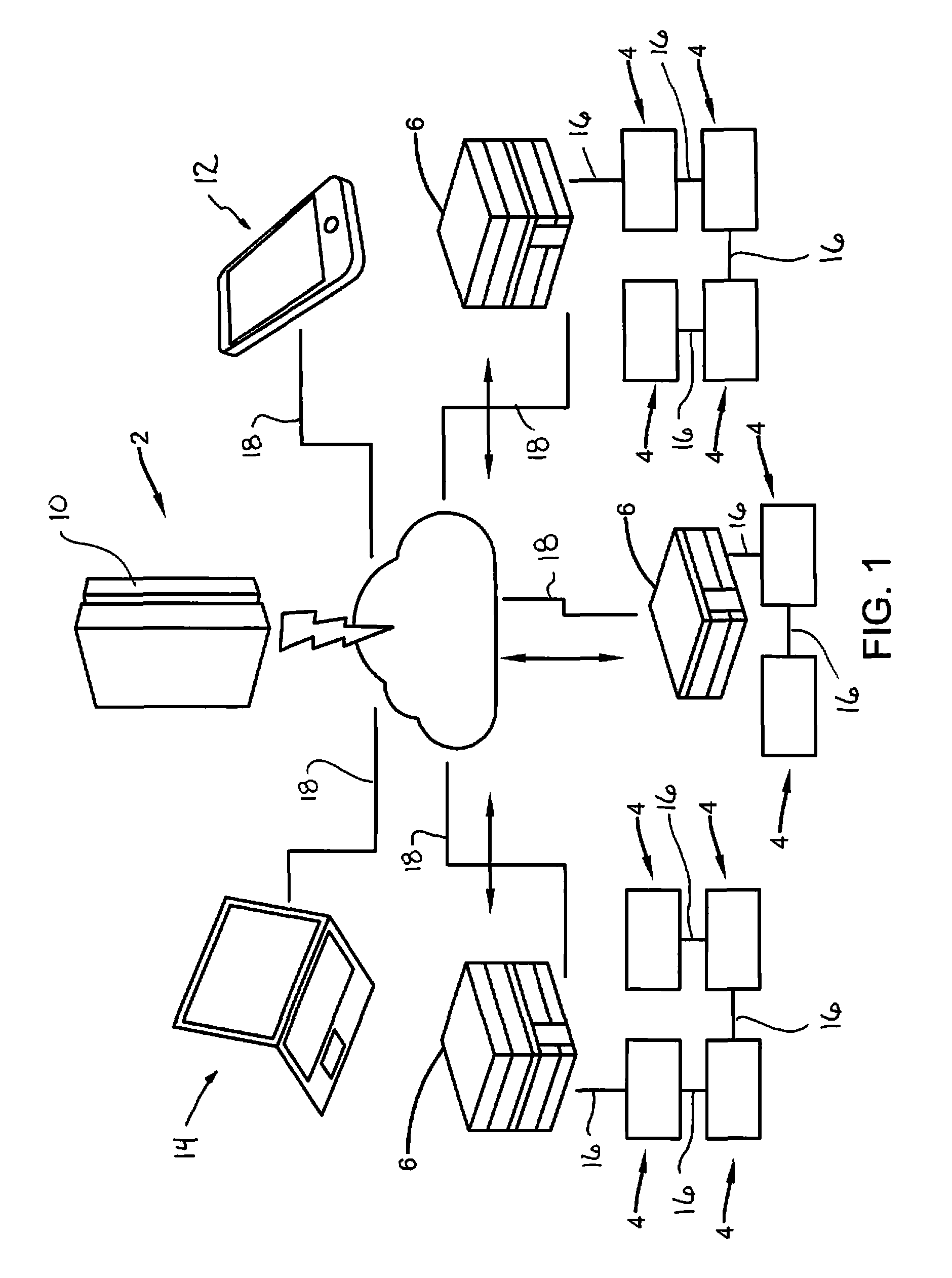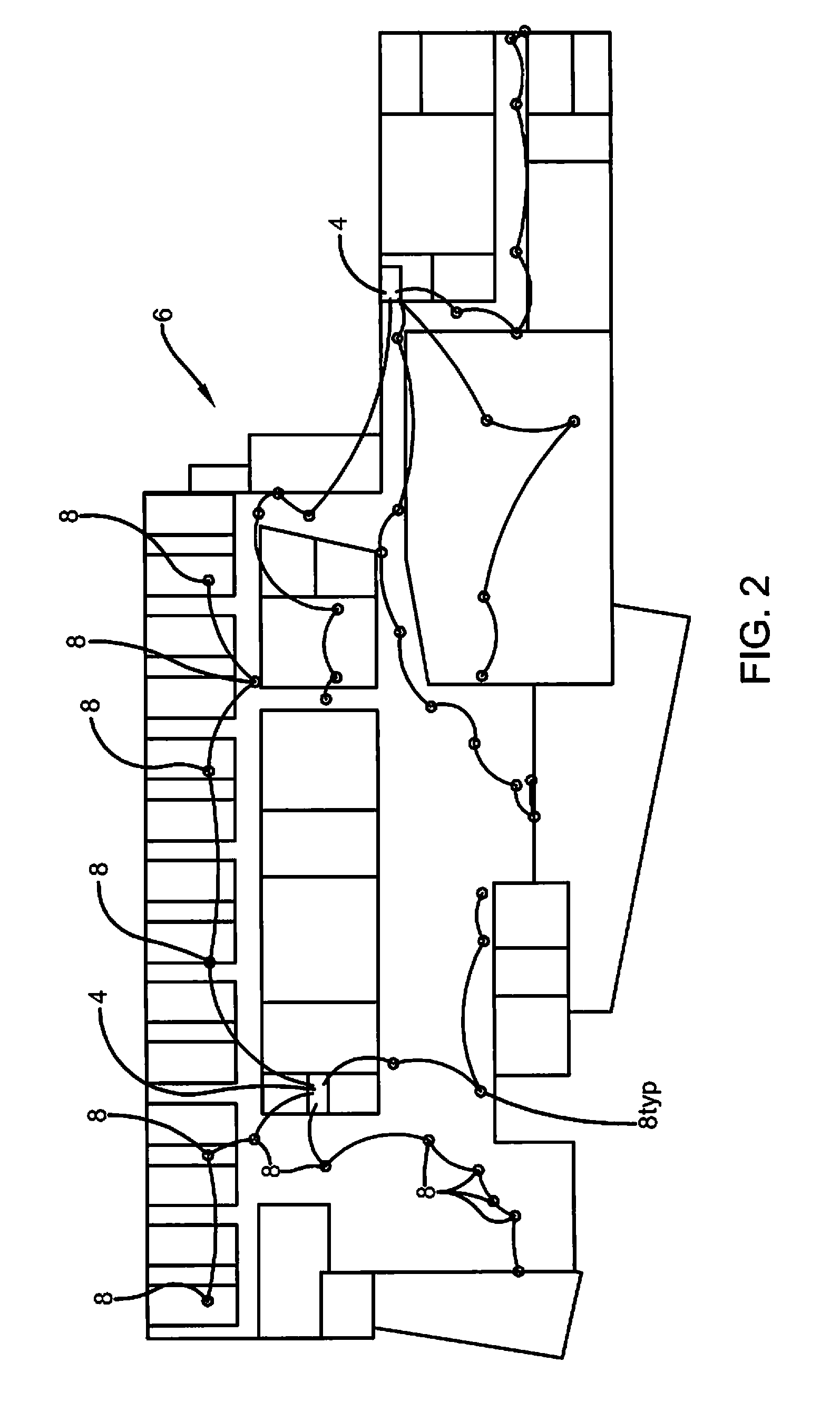Emergency lighting monitoring and reporting system
a technology of emergency lighting and monitoring system, applied in the field of emergency lighting system, can solve the problems of reducing the amount of stored energy in all types of batteries, labor-intensive manual inspection process, and so as to achieve the effect of reducing the light outpu
- Summary
- Abstract
- Description
- Claims
- Application Information
AI Technical Summary
Benefits of technology
Problems solved by technology
Method used
Image
Examples
Embodiment Construction
[0039]An exemplary emergency lighting monitoring and reporting system 2 includes a plurality of central battery systems 4 located in different buildings 6. Buildings 6 may be geographically distant or geographically together at a common campus. Buildings 6 may be commonly owned or owned by different entities. Each central battery system 4 provides normal on and backup power to at least one but typically a plurality of lighting circuits that each may include a plurality of lighting fixtures 8. Lighting fixtures 8 are emergency lighting fixtures that require a battery backup power so they may be used to provide lighting during power outages. As described above, such battery backup systems must be tested periodically and reports must be available for the AHJ. Each central battery system 4 is adapted to perform the testing and data reporting functions that allow the user of the lighting systems to comply with the requirements of the AHJ. Central battery systems 4 provide the power, test...
PUM
 Login to View More
Login to View More Abstract
Description
Claims
Application Information
 Login to View More
Login to View More - R&D
- Intellectual Property
- Life Sciences
- Materials
- Tech Scout
- Unparalleled Data Quality
- Higher Quality Content
- 60% Fewer Hallucinations
Browse by: Latest US Patents, China's latest patents, Technical Efficacy Thesaurus, Application Domain, Technology Topic, Popular Technical Reports.
© 2025 PatSnap. All rights reserved.Legal|Privacy policy|Modern Slavery Act Transparency Statement|Sitemap|About US| Contact US: help@patsnap.com



